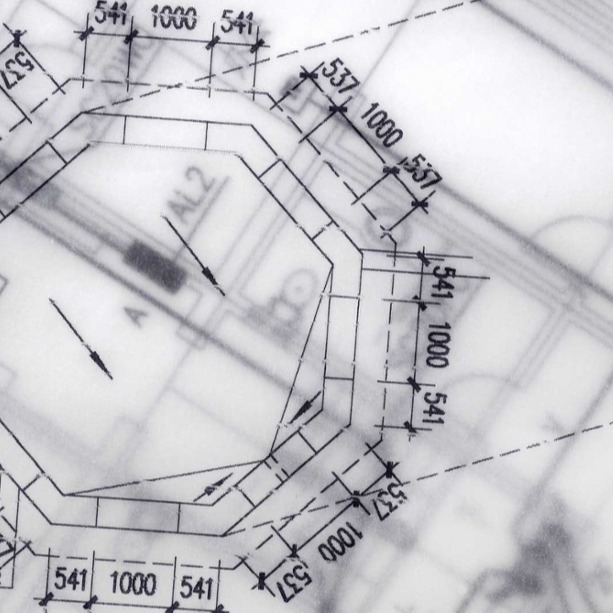A real-time location system (RTLS) allows objects or people to be located within buildings. A key feature of an RTLS solution is how accurately it is able to report this location, as this differs by technology from “centimeter accuracy” to “room-level accuracy.” There are other considerations, too, like total cost of ownership, disruption to current business practices, return on investment, integration with existing data platforms, and more. Along with RTLS accuracy, these factors are weighed by our customers when they choose a solution.
What Is Accuracy in the Context of RTLS?
Ultimately, the accuracy of an RTLS solution is defined by its ability to reliably report locations within the precision bounds for which it was designed. For example, room-level systems should report the correct room, and centimeter X-Y-Z systems should report these coordinates within some specified deviation.
Different use cases require different levels of precision. Often, we have found that customers need less precision than they assume, while in other cases more precision is needed. At Link Labs, we are passionate about our solutions and want to work with customers to meet their needs. But when our solutions don’t match a particular use case, we propose alternatives that are better suited to their needs.
In this article, we’ll look at when and why varying levels of precision and accuracy matter and how they are achieved by different types of RTLS technologies.
And if you’re looking to start with a primer, check out our guide on the basics of RTLS technology.
Why Does Accuracy Matter for RTLS Technology?
Clearly, for an RTLS system to work, it must be able to report a location accurately and in a timely manner. The level of accuracy you can expect from a particular RTLS setup often depends on your use case.
For example, a warehouse application might require that an inventory barcode scanner record a scan location at the “shelf level” so that a particular item could be easily located when it is needed. In contrast, for a nurse tracking system, pinpointing a nurse’s location within a room is not as important as identifying the room itself. Usually, the accuracy of the room information (that is, correctly identifying the room or floor in question) is much more important than the additional system complexity needed to report with greater detail—like the fact that the nurse is three feet from the window near the leftmost wall.
Systems that can pinpoint an object’s or person’s location down to the centimeter are vital for some customer use cases, but only some uses require this level of accuracy. Many customer needs can be met with less precision than initially assumed because increased accuracy comes at the cost of more equipment and complexity that the user must manage. To provide value to customers, the key is to design an RTLS system that provides sufficient precision and accuracy to support the specific use cases for which it was intended.
How Is Location Determined Indoors?
To better understand how precision affects cost and complexity, it’s important to discuss how location information is determined by different types of systems. Generally, RTLS systems rely on one or more of these technologies: presence, time of flight, power level measurement, or angle of arrival.
Presence
Presence-based technologies are unable to provide an asset’s specific X-Y-Z location in space; rather, they report whether an asset can be detected in a more general location (think “this room” or “this area” instead) at a much lower cost and complexity than other technical approaches. The most common types of presence systems use ultrasound, infrared (IR) light, or short-burst radio transmissions, similar to Bluetooth Low Energy.
An infrared-based system uses a tag that emits a coded IR transmission, which is similar to how your TV remote control works. An IR sensor in the ceiling then picks up the transmission, and the system knows that a particular tag is in a particular room. Ultrasound systems operate similarly, except they use sound instead of IR. Walls do a great job at blocking IR and ultrasound, so these systems are great choices for hospitals that are able to run all the cabling necessary to place a detector in each room.
Time of Flight
Most highly accurate RTLS systems use time-based measurements of radio signals (or ultrasound in some cases). By recording the time it takes a signal to go from the asset tag to a set of detectors, the system is able to approximate the distance to the target. Because of a counter-intuitive mathematical feature of time-based radio measurements, signals need a wide bandwidth in order to work effectively indoors. This is why radio-based systems that measure distance generally use ultra-wideband (UWB) RTLS technologies.
Unfortunately, time-based RTLS systems require that three or more detectors be in range of every asset tag. For that reason, this type of system is generally only used in “open” areas like warehouses. The cost of installing multiple UWB receivers in every hospital room makes UWB a less common choice for healthcare RTLS installations. Some Wi-Fi-based RTLS systems can use a variation of time of flight, but the performance is limited due to the number of Wi-Fi access points generally in use.
Power Level
A simpler radio-based approach to indoor asset tracking is for the asset tag to transmit a regular beacon message and for a receiver to measure signal strength (power level) of the received message. An asset tag “beacons” out a coded transmission, which is detected by one or more sensors. Most Bluetooth beacon-based RTLS systems often operate this way, as do most Wi-Fi-based RTLS tags. With several receivers, the power levels (often discussed as RSSI or received signal strength indicator) of the beacon message from a device are compared across different receivers, and the receiver “hearing” the beacon with the highest power level is considered to be closest to the tag. This allows fewer detectors to be used but can often achieve the required level of precision for some use cases.
Power-level-only approaches deliver data to customers that assets are on-site and in general areas, but they suffer from several shortcomings that don’t make them a great fit in all cases. For example, the simple orientation of a tag can result in the highest RSSI value being “heard” by a receiver in the next room or on a different floor. These shortcomings can be partially addressed by adding more receivers, site RF fingerprinting, and more sophisticated mathematics and machine learning. However, each of these additions increases the cost of the solution (infrastructure and total data generated by the system), and they cannot match the accuracy of other systems.
Other Options
There are other technology approaches used by RTLS systems not covered in this post. These include passive RFID systems and solutions utilizing angle of arrival or angle of departure.
Improving the Level of RTLS Accuracy
An RTLS solution that reports a close, but ultimately imprecise, location can frustrate users. In some use cases, proper training and experience can help users to expect more realistic results from their RTLS system.
For inventory management, being off by a room may not matter. But inaccurate location can completely compromise other solutions. This is particularly salient for emergency or safety solutions, like a nurse call button, a staff and patient safety system, or panic button systems. If a staff member summons help using an RTLS system that places her on the wrong floor, this inaccuracy can increase the danger of a situation, delay aid, or cause significant confusion.
As we outlined above, some RTLS technologies are less precise than others, so it is imperative that the solution match the use case. We work closely with each customer to ensure that our solutions are meeting their specific needs.
As we mentioned above, power-level systems are notorious for room and floor bouncing, in which they report the nearby (or “wrong”) room or floor because of radio signals that can be masked or combined to create areas of suboptimal performance.
With time-based systems like UWB, you generally install more anchors (signal sensors) to ensure that four or more sensors have a chance of detecting a tag. When only two or three sensors “hear” a tag, the location precision will suffer.
IR and ultrasound systems, when properly installed and maintained, don’t suffer from these same issues.
At Link Labs, our engineers have worked for years to develop innovative and patented technologies and approaches that maintain the low cost of a power-level-based system while also minimizing, and in many cases eliminating, room errors.
Just-Right Precision™ and Cost
At Link Labs, we always recommend that customers install an RTLS system that is designed to give them the level of RTLS accuracy and precision that their use case demands—no more and no less. In fact, the ability to deliver different levels of precision in different parts of our deployments is one of the best parts of working with Link Labs. We call it “just-right precision”—we deliver more precision where it is needed and less where that’s acceptable. This allows us to customize a deployment to a customer’s needs, flowing into another advantage of the Link Labs approach.
Our in-building solutions utilize a stand-alone networking layer that doesn’t require use of a customer’s Wi-Fi networks or the running of ethernet cable. We run a completely parallel network dedicated to delivering RTLS data. And, yes, this means no IT integration requirements.
This combination of technology approaches, just-right precision, and a stand-alone network allows us to offer our customers solutions to their business problems at much lower costs, speeding the time to ROI and also opening up some RTLS use cases that are uneconomic with other systems. In most cases, our installations are less intrusive and take significantly less time than our competitors’.
Interested in learning more? Give us a call so we can help you determine if our RTLS solutions are right for you.




